17 Kind People Who Just Made Other People's Life Better

The coldest part of our planet, Antarctica, keeps surprising us. Take a look at this waterfall named Blood Falls. Reddish water falls from the white ice. Scientists concluded that the color is related to iron. The water coming from the glacier oxidizes and rusts when it’s exposed to oxygen, and the red color occurs.
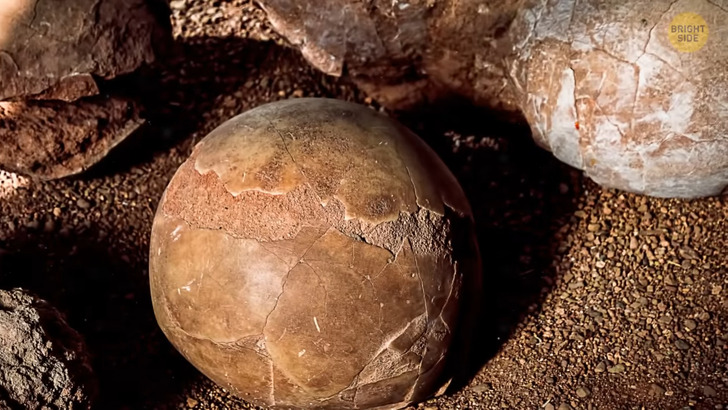
Step on Mount Gandeng. It “lays eggs”! Well, maybe not real eggs, but the stones certainly look like dinosaur eggs. That’s why the mountain got its fame! The — let’s call them stone eggs — formed in one part of the mountain over 500 million years ago.
Interestingly, this phenomenon repeats once every 30 years. Eggs come out in various sizes and shades. The stones appear on the surface of the cliff. A study made in the area has revealed that the composition of the stones of the cliff isn’t similar to the other parts of the mountain.
Here, calcareous rocks rules. They are more prone to erosion. They ripen off day by day. It took three decades for the stones to get the egg shape. Yet it’s still a mystery how these rock formations can be so perfectly spherical and smooth. According to scientists, every stone egg has an organic core. They are made of shells, plant remains, fish teeth, and skeletons. Maybe this has something got to do with it.
Gulu Village is close to the stone eggs. Locals believe that these eggs are sacred. Villagers associate it with good fortune. In fact, nearly every family has one of these eggs in their house. Unfortunately, there are only about 70 eggs left so If you want to see them you gotta hurry up!
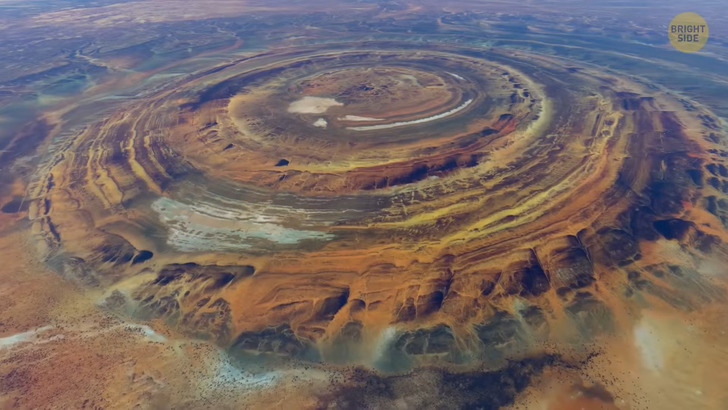
The Richat Structure is a circular geological phenomenon in the Sahara desert near Mauritania. It’s made out of rocks in layers, and these layers look very much like rings. No wonder the unique structure even got NASA’s attention!
Up from the sky, the geological feature seems to be swirling and spinning. Scientists are still not sure how these rings got there. Some say it was an asteroid impact. Many others believe that it was a natural geological process. To them, The Richat Structure is an uplifted and eroded dome. Geologists often classify it as a “domed anticline.”
The scientists discovered that the rocks at the center are older than the ring-shaped outer rocks. So, it seems like the stones have been eroded to flat rock layers. Anyway, there’s no valid explanation for this phenomenon and the 28-mile-long mystery of the Sahara is still to be solved.
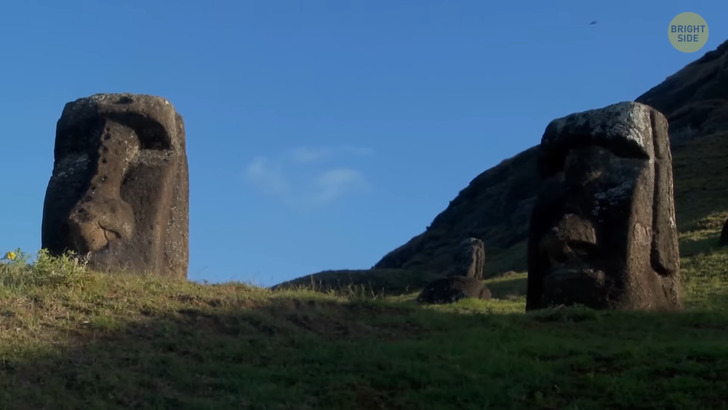
Number 4 is Rapa Nui or Isla de Pascua, but I bet you know it as Easter Island. Yeah, it has 3 names. It was discovered by Jacob Roggeveen who actually never intended to look for that island. He just casually landed there one Sunday — that’s where the name comes from.
Jacob was supposed to find Terra Australis — disclaimer — it’s not Australia. This one never existed and was nothing but a hypothetical continent. Plus, he wanted to peek at Davis Land, which was believed to have been once seen by Edward Davis, the pirate, not Edward Davis the saxophone player. . Jacob failed at that too — though nobody ever saw that island except for the pirate Davis.
Jacob may have failed to discover some lands he wanted to, but he discovered Easter Island instead! This is an island and special territory of Chile located in the southeastern Pacific Ocean. It’s on my list because nearly 1,000 stone statues called moai were found there. They were created by the Rapa Nui people.
Nearly all statues represent gigantic heads, but there are also a small number of figures kneeling with their hands over their stomachs. Each statue represented chiefs or other important members of Easter Island society. To curve those statues, the locals used volcanic stones that were softened.
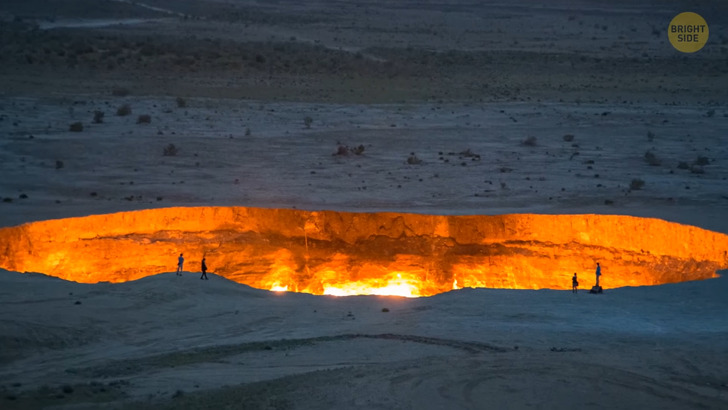
The next stop is the gateway to the underworld. Oh, don’t worry, this is just how people labeled Darvaza Gas Crater in Turkmenistan. This giant natural gas crater has been there for 5 decades. This crater is continuously burning gases. The president of the country wants experts to find a way to extinguish this continuous firing pit. This site was created by people accidentally in 1971 while working on a natural gas project. Ever since then, the flames have been on, and it’s become a tourist attraction
Mysterious constructions are sometimes built in our era too. We don’t have to go millions of years ago to long-gone civilizations. Edward Leedskalnin single-handedly built a structure called Coral Castle in Homestead, Florida. He didn’t use any large machinery. He carved and sculpted more than 1,100 tons of coral rock in 28 years until 1951. It’s a mystery how he managed to do it all by himself.
Leedskalnin sculpted the sedimentary rock into different objects, such as walls, tables, chairs, a fountain, and a sundial. There’s, of course, a legend behind this mystery too. He was inspired to build the structure after being abandoned by his fiancé on their wedding day. Uh oh, runaway bride! He wanted to prove his love to her and the world. So he wanted to do something extraordinary. Welp, he definitely nailed it!
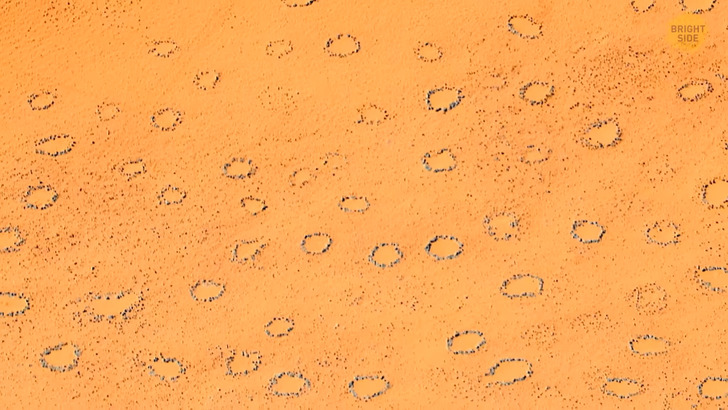
Let’s talk a little bit about the mystery of the Namibian Fairy Circles. There are millions of circular patches in hundreds of miles ranging from 10 to 65 feet in diameter. They are called fairy circles because they look like a fairy or an otherworldly creature made them. These are essentially oval-shaped soil surrounded by grass.
There are a lot of local beliefs surrounding the creator of these marks. Yet, science says something else. Biologists and mathematicians have been puzzled by the mystery of the Namibian fairy circles for decades. There is more than one theory to explain this phenomenon.
Here’s one popular theory: the water is limited in the desert, so plants compete to reach the water. Some plants expand and thrive into a patch, but smaller plants nearby cannot get the necessary water to live. In the end, some vegetation disappears, and the remaining ones stay at the patch’s edges. That’s why they form such regular distanced gaps.
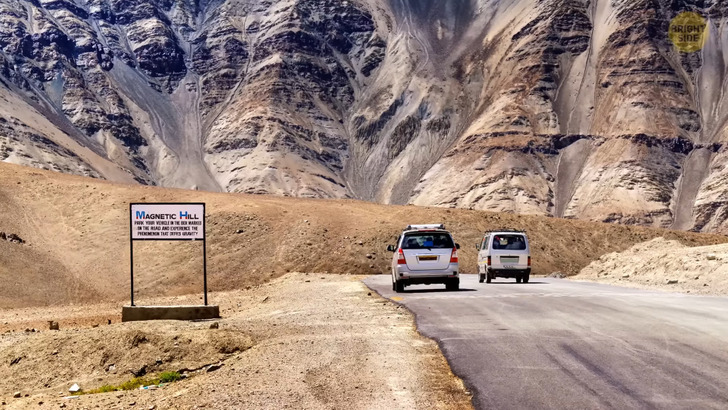
What if I tell you that there is a hill in Leh City, India, where, instead of rolling downwards, things go uphill? It is an optic illusion. The road looks like it’s a sloping hill because of its surrounding landscapes. Yet the road actually goes down. These kinds of hills are called magnetic hills or gravity hills. Scientific explanations vary. The most common theory says that the hill has such a strong magnetic force that it can pull cars in the vicinity.
How about seeing some flaming rocks? Yanartaş spread over an area of over 3 square miles. The place is located on a rocky mountain in southwest Turkey near the town Çıralı. Yanartaş got its name from its appearance. It literally means “flaming stone”. The rocks have been flaming for at least 2,500 years, and they’ll probably keep burning for the coming decades. The mountain where the rocks are is an inactive volcano.
So it’s full of tiny fumaroles that release gases such as methane. The gas ignites when it comes into contact with oxygen and creates the flaming effect. Ah, and by the way, back in the day, sailors used the flames as a natural lighthouse as it’s really close to the sea. Today it’s more of a tourist attraction, though. Hikers love it too!
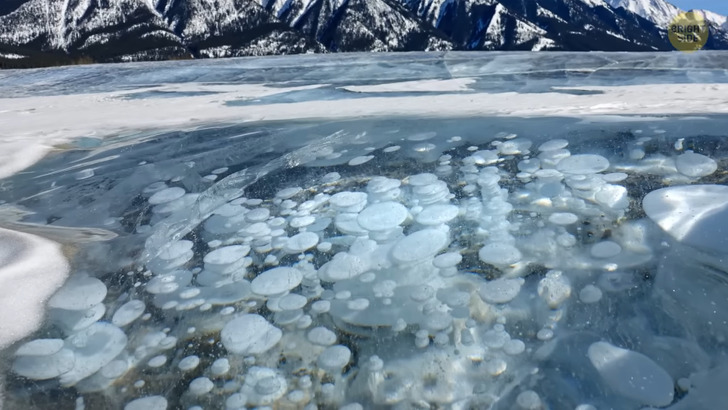
Now walk on this frozen Lake Abraham in Canada. In winter, the frozen water gets filled with ice bubbles. It looks magical, but these white orbs aren’t that safe. They consist of flammable methane gas. Ugh. Beauty can be misleading!
The next one is from Racetrack, Death Valley, US. There is a dry lakebed with moving rocks. These odd rocks look as if they’ve been pushed or dragged by someone or something. They leave both a trail and a mystery behind. The force behind all is now understood. Surprise, it’s the wind! And some ice. Scientists say the wind pushes the rocks during brief windows when the soil is covered with ice.
I can’t help but notice that many mysterious things on the Earth involve stones or rocks. Or methane. Which one of these phenomena is your favorite?











